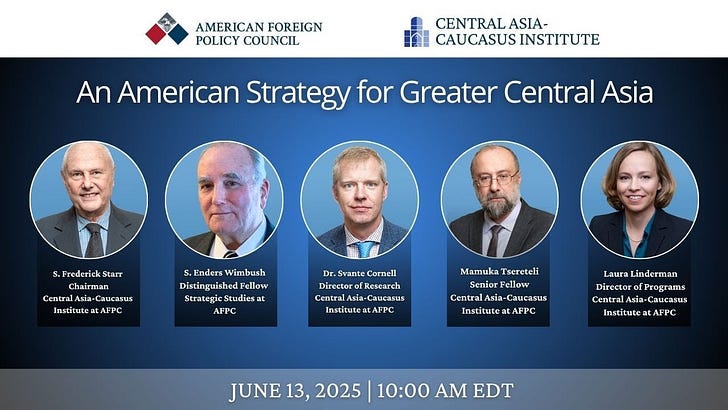The Central Asia - Caucasus Institute at the American Foreign Policy Council (AFPC) recently hosted a virtual launch of its official American Strategy for Greater Central Asia. Watch the full discussion on YouTube.
The discussion featured S. Frederick Starr, Chairman of the Central Asia-Caucasus Institute; S. Enders Wimbush, Distinguished Fellow, Strategic Studies, AFPC; Svante Cornell, Director of Research, Central Asia-Caucasus Institute; Mamuka Tsereteli, Senior Fellow, Central Asia-Caucasus Institute; and Laura Linderman, Director of Programs, Central Asia-Caucasus Institute.
The panelists unveiled an ambitious new strategy that could reshape America's approach to a critical but overlooked region. Their comprehensive framework expands the definition of Greater Central Asia to include not just the five Central Asian republics, but also Azerbaijan, Georgia, Armenia, Mongolia, and Afghanistan—bringing them under a unified policy umbrella. This represents a bold departure from decades of fragmented engagement.
The stakes couldn't be higher. As global powers compete for influence, the panelists argued that the U.S. must pivot from outdated Cold War thinking that still views Greater Central Asia through a Soviet lens. Instead of treating the region as merely a chess piece in great power competition, they called for direct, meaningful partnerships built on four pillars: regional sovereignty, enhanced connectivity, economic opportunity, and robust security cooperation.
The message was clear: This expanded Greater Central Asia's strategic importance in modern geopolitics demands that America engage these nations as partners in their own right, not as afterthoughts to relationships with Russia or China.
Read the complete strategy here.



